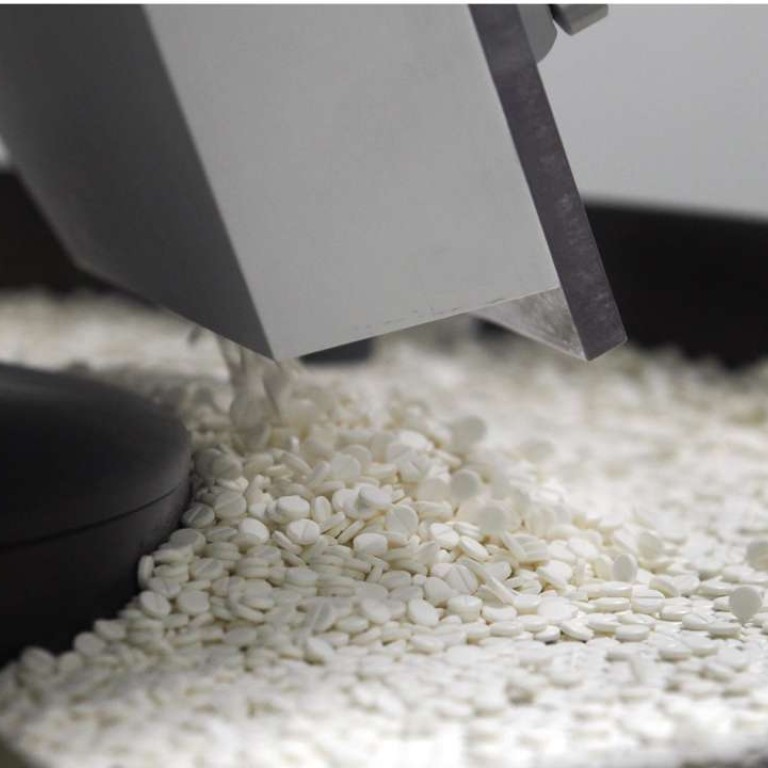
China’s drug makers may face revenue-growth challenges in 2016, analysts said
Chinese pharmaceutical companies may face another year of slowing sales growth in 2016 due to a tougher regulatory environment that could push prices lower, analysts said.
Chinese pharmaceutical companies may face another year of slowing sales growth in 2016 due to a tougher regulatory environment that could push prices lower, analysts said.
“Industry growth slowed to less than 10 per cent last year,”GF Securities analyst Zhang Qili who tracks healthcare companies in the A-share market, said. “The government has strived to control costs on medical insurance, which had hurt sales and prices of drugs.’’
Additionally there have been fewer drug tenders by provincial governments, he said.
“Provinces usually conduct tendering every two years, but last year only Hunan and Zhejiang provinces did,’’ Zhang said.
BOC International analysts Kou Jiaye and Tang Ruyi said domestic firms will have a difficult 2016 due to an overall slowdown in the pharmaceutical industry brought on by the delay of drug tendering and price erosion caused by second-round price negotiations with hospitals.
Their comments come after results this week from red-chip China Traditional Chinese Medicine — a drug developer, manufacturer and distributor — which said revenue rose 40.0 per cent in 2015 to 3.7 billion yuan (HK$4.77 billion). Shenzhen-based drug distributor China Medical System posted 20.7 per cent annual sales growth to 3.55 billion yuan.
Still, China Traditional Chinese Medicine’s revenue increased only 3 per cent from a year earlier when its acquisition of Jiangyin Tianjiang Pharmaceutical, the largest manufacturer in China of concentrated traditional Chinese medicine granules in China, or CCMG, is excluded.
Industry growth slowed to less than 10 per cent last year. The government has strived to control costs on medical insurance, which had hurt sales and prices of drugs
Any slowdown in sales may be offset by coming opportunities in niche markets. The growth of China Traditional Chinese Medicine last year was supported by its Jiangyin Tianjiang Pharmaceutical acquisition, according to a bourse filing by the firm.
Jiangyin Tianjiang Pharmaceutical’s net profit jumped more than 20 per cent in 2016 thanks to the fast-growing granules market, Kou and Tang said. A further profit increase of about 15-20 per cent can be expected this year, they said.
China Medical System is looking to the hypertension drugs market after it won an exclusive license for Plendil from Swedish firm AstraZeneca in February. The drug is included on the National Reimbursement Drug List for the treatment of hypertension and stable angina pectoris, according to the firm’s filing to the local bourse.
The market size of hypertension drugs in China has been growing at a compound annual rate of 17 per cent in past three years and the number of patients suffering hypertension may rise by 10 million each year in the world’s most-populous country because of an ageing population, the BOC analysts said.
With 10 per cent market share in the sector, the Shenzhen-based drug seller can generate 1.2 billion yuan revenue a year, the two analysts estimated.
“China Medical System is very prudent in its selection of new drug licenses or asset purchases,” they said and gave the company’s stock a “buy” rating.
Shares of the company closed at HK$10.52 on Thursday. The Hong Kong stock exchange is closed for the Easter break and will reopen on Tuesday.
Zhang at GF Securities said drug makers with innovative medicines are likely to outperform the wider industry, as new medicines carrying strong demand can bypass the tendering process and are less affected by price controls.
Newer products have contributed to the high growth to China Medical System as well, which recorded 45 per cent overall revenue growth year-on-year in January, Morgan Stanley said in a report.
Jason Chan, an investment manager with Southwest Securities, said bio-pharmaceutical makers may benefit from government support because stimulating the industry was included in China’s 13th five-year plan.
“The pharmaceutical industry depends greatly on government policies,’’ Chan explained. He added that distributors of imported drugs will be under pressure as regulations on over-priced medicines are tightened.
He said the pharmaceutical sector on the Hong Kong stock market has an average price-to-earnings ratio of 16 times, which is rather cheap after the market correction of benchmarks in January given the strong corporate earnings. Chan suggests investors to wait and see whether more detailed policies will come out to bring a price rebound to the sector.

